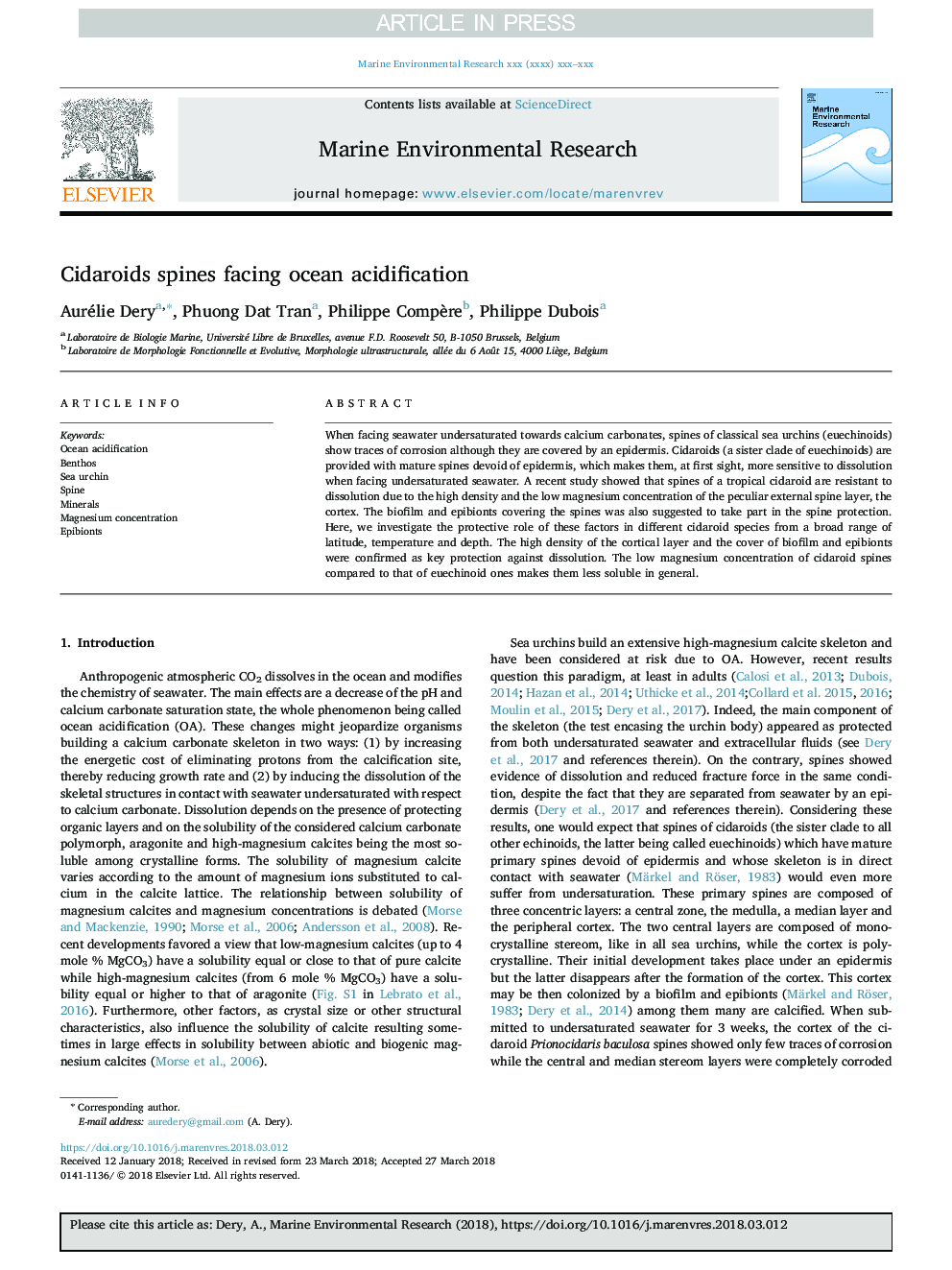| Article ID | Journal | Published Year | Pages | File Type |
|---|---|---|---|---|
| 8886262 | Marine Environmental Research | 2018 | 10 Pages |
Abstract
When facing seawater undersaturated towards calcium carbonates, spines of classical sea urchins (euechinoids) show traces of corrosion although they are covered by an epidermis. Cidaroids (a sister clade of euechinoids) are provided with mature spines devoid of epidermis, which makes them, at first sight, more sensitive to dissolution when facing undersaturated seawater. A recent study showed that spines of a tropical cidaroid are resistant to dissolution due to the high density and the low magnesium concentration of the peculiar external spine layer, the cortex. The biofilm and epibionts covering the spines was also suggested to take part in the spine protection. Here, we investigate the protective role of these factors in different cidaroid species from a broad range of latitude, temperature and depth. The high density of the cortical layer and the cover of biofilm and epibionts were confirmed as key protection against dissolution. The low magnesium concentration of cidaroid spines compared to that of euechinoid ones makes them less soluble in general.
Related Topics
Physical Sciences and Engineering
Earth and Planetary Sciences
Oceanography
Authors
Aurélie Dery, Phuong Dat Tran, Philippe Compère, Philippe Dubois,
